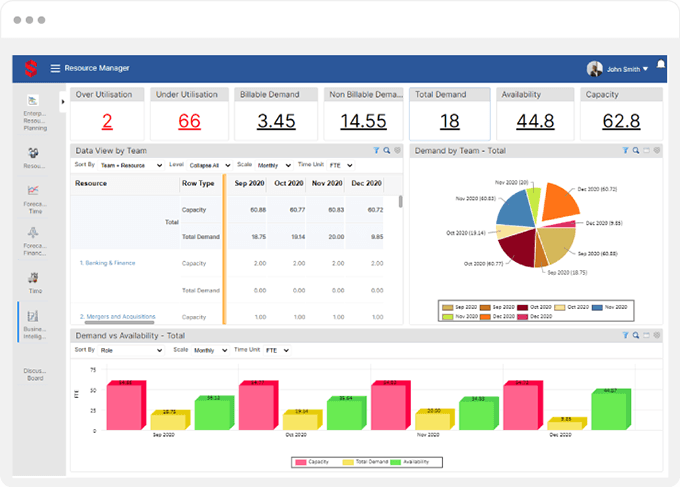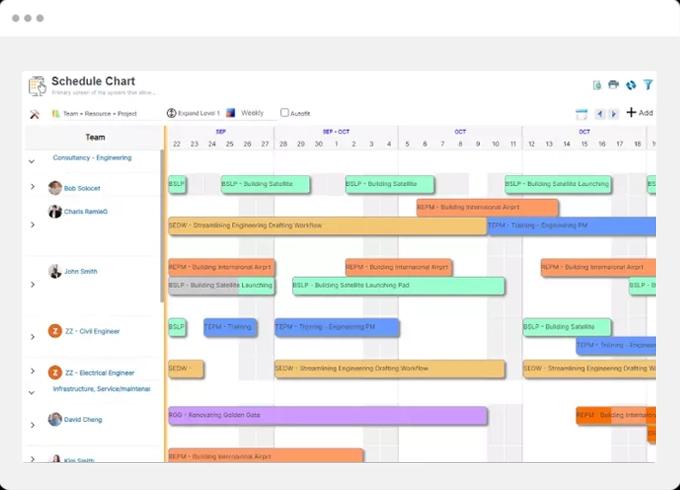Most Powerful Resource Capacity Planning

Trusted by Many Fortune 500 Companies Across 50+ Countries. Over 20 Years in Business.

Why Choose SAVIOM Resource Capacity Planning
Multi-dimensional Capacity vs. Demand Analysis
Identify shortages or excesses across various dimensions like role, team, department, location, skills, etc.
Forward Plan for Effective Pipeline Management
Ensure your resource pool is optimally balanced, skilled, and available to meet the new project demands.
Foresee, Track & Optimize Resource Utilization
Optimize resource usage in real time to maximize productivity and reduce resourcing costs significantly.


Forecast vs. Actuals Comparison of Project Financials
Analyze financial indicators such as cost, revenue, profit margins, and proactively control project budget.
Real-time Dashboards, Analytics, and Reports
Unleash the power of real-time BI to gain accurate foresight and faster decision-making.
Seamless Integration
Integrate data from all your business applications to create a single source of truth.
Our Product Highlights
- DEMAND MANAGEMENT
- CAPACITY MANAGEMENT
- RESOURCE UTILIZATION
- REAL-TIME BI
- PROJECT FINANCIALS
- AUTOMATION & SCENARIO PLANNING

Multidimensional Resource Requirement
Find Every Current & Future Work on a Unified Platform
- 360-degree visibility of project & non-project demand
- Capture employee time off & vacations for better planning
- Resource estimation for future opportunities
- Sufficient lead time to make the right resources available
Integrate Seamlessly with Your Existing Systems
Integrate with any of your existing systems for seamless data import and export
- 01
Control your sync frequency
Real-time or batch integration with any data source, including ERP, ERM, Project planning tools, PPM tools, and HR. - 02
Multiple data points
Choose the type of data to exchange (staff, projects, tasks, timesheet, leave, etc.). - 03
Only sync what you need
Interface with existing business intelligence and reporting systems. - 04
Extensive reporting
Set up workflow alerts to streamline the workforce planning process.



Book Your Free Customized Trial Today!
See how intuitive and effective our Resource Management Solution is by booking a free, custom-configured trial.

Best Practices of Resource Capacity Planning Software
In the last few years, the resource capacity planning tool has evolved into enterprise-level software for many modern businesses. Now it has become a strong driver for improving business performance and profitability. Following are some of the best industry practices:
- 01
Forecast capacity vs. demand and form a project resource plan in advance
Forecasting capacity vs. demand by role, department, team, location, skills, helps identify short- or long-term shortages/excess of resources. This enables the managers to implement the right resourcing treatments to bridge the gap. - 02
Track and Analyze the competency matrix in real-time
Tracking and keeping up-to-date information about the workforce competencies and skills is critical. It allows the right resource with skill, experience, qualifications, individual preferences, etc., to be allocated to the proper work. - 03
Manage project pipeline efficiently
The capacity planning tool should keep track of future potential projects in the pipeline and forecast estimated resource demand. It will ensure the resource pool is optimally balanced, skilled, and ready to meet the demands of new projects. - 04
Foresee project vacancies and people on the bench
Failure to find the right resources for the right project can cause you to lose an opportunity. Therefore, the system should give you foresight into future resource needs and people who will end up on the bench. - 05
Predict and improve resource utilization levels
The tool should provide insights into overall utilization levels and identify instances of over/underutilization. This will help you take measures to ensure optimal workforce utilization and make the best use of their available capacity. - 06
Plan for different scenarios using what-if analysis
In a multi-project environment, balancing the resource capacity against the demand becomes challenging. Therefore, organizations can implement simulation and modelling techniques to simplify capacity planning.
Why Customers Love Us?

















